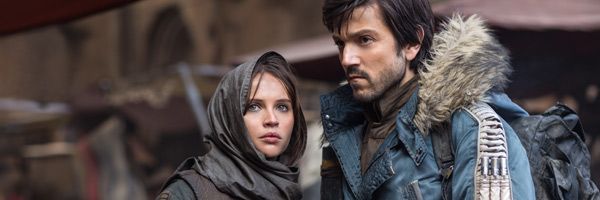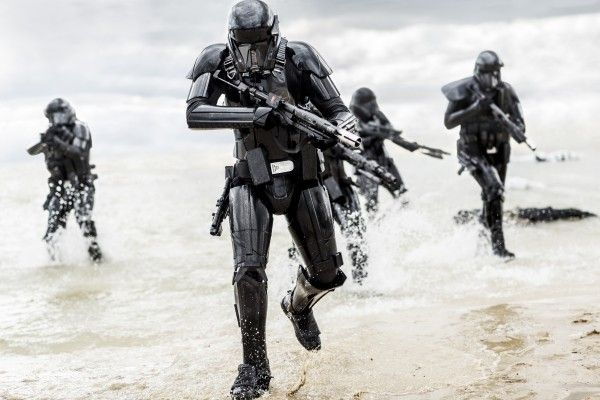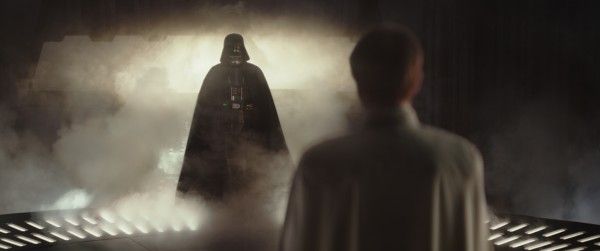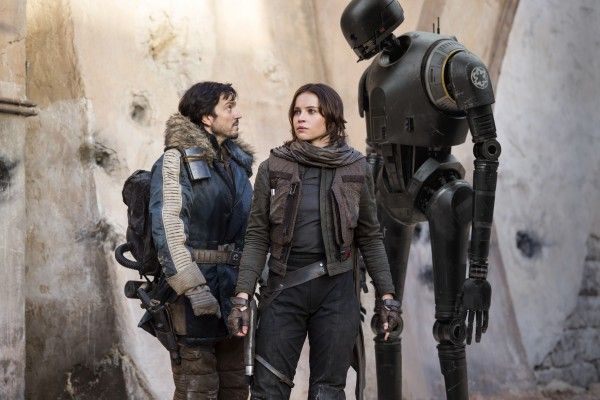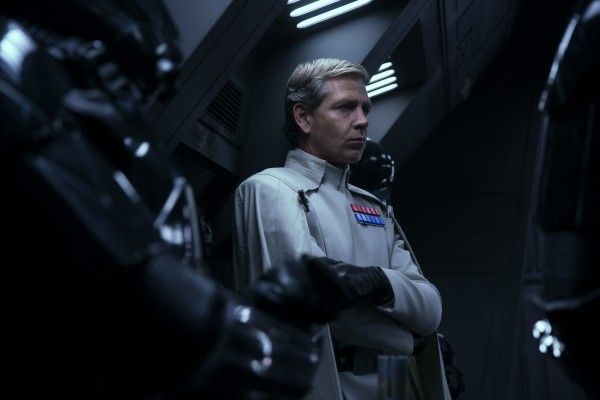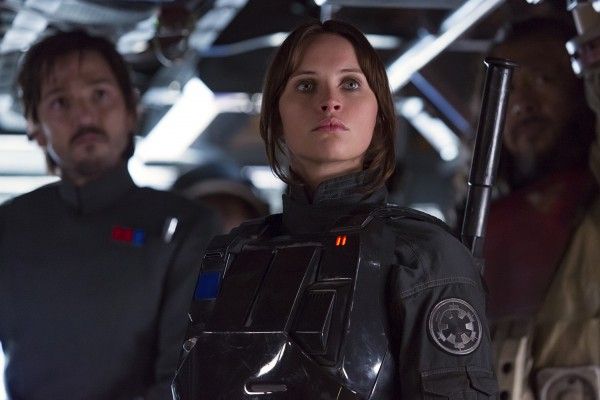Spoilers ahead, y'all. You've been warned.
Last year, the most successful film franchise of all time returned to theaters with Star Wars: The Force Awakens, the long-awaited continuation of the Skywalker saga that inspired an unprecedented audience enthusiasm and shattered box office records. It was a sensation, but the reaction was undeniably split. For many, The Force Awakens was a triumphant return to form for the franchise after the wayward years of the prequels. For others, it was a copy-paste retread of A New Hope.
Cut to a year later, and we're having a very similar discussion about Rogue One, Lucasfilm's first standalone Star Wars film, which promised to introduce new characters and worlds to the Star Wars universe without being beholden to the narrative of the sagas. No Jedis, no Skywalkers; Gareth Edwards' prequel takes place right before the events of A New Hope, following the ragtag group of rebels who stole the Death Star plans. And once again, fans are debating whether Rogue One is one of the best Star Wars films of all time or a nostalgia-driven retread hampered by reshoots and studio interference.
In truth, Rogue One is, like The Force Awakens, a mixed bag. It's a flawed film, and abundantly so, but it's also got a big beating heart and a swinging set of balls. If The Force Awakens kept the safety switch on with a strikingly familiar family-friendly narrative, Rogue One throws it out the window with a heartbreaking and unusually grim depiction of the "Wars" in Star Wars. It's a brave film that takes a lot of swings, even if it doesn't land all the hits. Unfortunately, in throwing out the narrative playbook, Rogue One ends up stumbling over its own story beats and while it may not be a play-by-play retread of A New Hope, it's very much living in its shadow.
In fact, a popular complaint that there is too much Star Wars in Rogue One; too many callbacks and nods to previous films. It's a fair criticism; there are a lot and they can be jarring or distracting from the story at hand. At their best, these moments play out as unobtrusive nods to the universe at large, like the blue milk and Jyn's Storm Trooper doll. Simple signs that we're inhabiting the larger world. At worst, we get Peter Cushing's digital resurrection, not as a cameo to serve as the throughline to the state of the Empire in A New Hope, but in a woeful miscalculation, as a supporting character. There's really no excusing this one, and I can't imagine anyone's happy with how it turned out. Of course Tarkin had to be there, we know how vital his role is in what to come, but there's no sane reason to slap an unconvincing Peter Cushing skinsuit on another actor and take the audience on a stomach-churning trip through the uncanny valley (not to mention the complicated and questionable ethics of doing so). As for the other callbacks, your mileage may vary. Personally, I could have done without the cantina goons but I loved seeing Red Leader and Gold Leader in the Battle of Scarif.
Of course, the major overhang from A New Hope is Darth Vader, who returns in terrifying form in Rogue One. He is formidable, gifted, and imposing. And personally, I'm somewhat baffled by the intense reflex to his force choke pun... Vader's always been a sassy bastard, as the folks over at reddit have detailed. There has also been some pushback against Vader's big third-act slaughter, citing the audience cheers that accompany it. But that speaks to a deeper cultural reaction to violence, similar to the way audiences almost always laugh when a female character gets punched in the face, and the fact that through marketing Vader has become a stylish emblem for many, and a beloved icon of the franchise. Taken in the context of the film itself, Vader's big set-piece puts a pit in your stomach with ferocious violence and a force (no pun intended) of malevolent intention. Vader's presence means Rogue One is perhaps too rooted in the tradition of the trilogy films, but he returns in peak form and it's no small delight to hear James Earl Jones voice the character again for what is quite possibly the last time.
Then there's the matter of the reshoots. They happened and they were significant, a fact that is not only demonstrated in the missing trailer footage, but felt in the film itself. Aside from the obvious third act changes, it's hard to know how much this shaped the film's narrative specifically, but it gives Rogue One a choppy texture you can feel even if you can't see exactly where the seams are. Riz Ahmed's Empire turncoat Bodhi is undercooked; mad one minute and inexplicably fine the next. Forest Whitaker's Saw Gerrera is similarly misued, a supposed extremist counterpoint to the rebellion, but the film never shows us what makes him one. The character's design is fantastic and Whitaker gloriously chews every piece of scenery they hand him, but the character never clicks, especially in his relationship with Jyn.
And if reports are to be believed, Jyn is perhaps the biggest casualty of the reshoots. Unfortunately, out heroine's arc seems to have been left on the cutting room floor. In the first trailer, Mon Mothma broke down Jyn's rap sheet, "Forgery of imperial documents, aggravated assault, possession of stolen property, aggravated assault, resisting arrest." A portrait of a defiant young woman who responds with unwavering snark. "I rebel.". What we end up with in the film is not much of a rebel at all, but a woman determined to keep her head down and merely survive, which makes it a bit of a stretch when she ends up calling the shots and determining the fate of the rebellion. Part of the reshoots were reportedly in service of softening Jyn's harsh edged to maker her a more empathetic character, but that also made her a character that doesn't quite track, even if Felicity Jones is absolutely on fire when she gets going.
But within the confines of a (mostly) self-contained short format story, there are also beautiful and fascinating characters. Galen Erso is one. A good man in an impossible situation who sacrifices family and dignity to design the grand flaw that allows Luke, Leia & Co. to bring the Empire down. His story only enriches the dramatic impact of the original films, and Mads Mikkelsen plays him with lovely stoicism and warmth. Donnie Yen's Chirrut Îmwe is another proud highlight. The martial arts legend has rarely had the chance to play such a cheerful, charismatic character and Chirrut himself is not only a joy to watch on screen, and a welcome kinetic shakeup of the standard issued blaster battles, but an excellent addition to the Star Wars mythology that expands and enriches our understanding of the force.
Likewise, Alan Tudyk's hacked Imperial droid K-2S0, who doesn't need a backstory to function, is a constant highlight and Ben Mendelson gets to play the most deliciously small-minded and self-serving of villains who is destroyed by his own petulant incompetence. Villains don't have to be brilliant to be effective. Krennic may be a slimy and inefficient careerist, but even so, he sets in motion the events that lead to the downfall of the Empire when he recruits Galen Erso and he dooms our heroes to their tragic and heroic deaths on Scarif through the failings of his ambitions.
That's where Rogue One really shines. It's the heroic sacrifice of the scrappy team that makes it such an effective and moving film in spite of all the missteps. Rogue One isn't the narrative of a "chosen one' hero leading the people out of peril, but that of a rebellion built from the people themselves. "Rebellions are built on hope," the trailer tells us, but they're also built on sacrifice of many, not the grand heroism of a few. The heroes of this story are the folks who were formerly reduced to two sentences in a prologue, they're the thankless soldiers on the ground getting the job done no matter how dark and dirty the deed. Rouge One is about the "Red Shirts", if I may cross franchises for a moment, the people who go down as statistics rather than names in a history book. It's about the sacrifice and importance of the individual, even if they're not prodigiously gifted or tied into a mythic legacy. That makes the film too beautiful to discount, and a genuinely bold tonal shift for the Star Wars franchise at large.
Rebellions are hard won with blood and bone. They are not clean, and Rogue One has the guts to add complexity to the rebel alliance and treat war like hell. Diego Luna's Cassian Andor brings darkness and shades of gray to our idea of the underdog rebels as we've always held it. He's got realpolitik pragmatism developed over a lifetime of espionage and fighting in the name of the rebellion. It's a much more realistic image of a rebel leader than we've ever seen from the franchise before. While previous Star Wars films have featured striking battles, in-depth politics, and staggering weapons of mass destruction, Rogue One largely removes the fantasy element in favor of the story the people who are willing to lay down their lives for a small step in the direction of the future they believe in. Lucasfilm could have built a franchise off the backs of these new characters, but instead, they let them die with dignity and that's a mighty bold statement in the age of franchising and shared universes.
Rogue One is also an exciting visual step forward for the franchise. Edwards has a gift for set-pieces that give the audience an intimate sense of scale. It's a welcome expansion the Star Wars visual language, and ILM delivers some of the most stunning work in their long and impressive catalogue in the climactic battle sequence, which combines the epic space-set shoot-outs with a much more frenzied and kinetic action on the ground. The scope of the action is electrifying and while the final act may occasionally feel like a protracted round of Mousetrap, each character offers a different vantage point as they play their small but immeasurably important roles to the bitter end.
What Rogue One has definitively shown is that in order for Star Wars to truly achieve its former glory, it need to turn away from the past and stop self-cannibalizing the franchise. It's time to give Episode IV some breathing room. The episodic films will always be inherently tied in with Star Wars history and the Skywalker legacy, but the standalones offer a unique opportunity to explore the vast Star Wars universe to the far-reaches of space and time. We know we'll be taking a walk down memory lane again with Phil Lord and Chris Miller's Han Solo movie, but after that, Lucasfilm would do well to make a film that can truly stand alone. Take us to the ancient history of the Jedi, introduce us to a far-flung rebel family unit working together in the time just before The Force Awakens, anything takes us somewhere we haven't been before. Rogue One isn't there yet, but it's a step in the right direction. The film has obvious flaws that make it frustrating at times, but it's a significant and bold tonal shift that points toward a promising future for a franchise willing to take chances and make something truly unique.
For Dave Trumbore's point regarding the flaws, click here.

